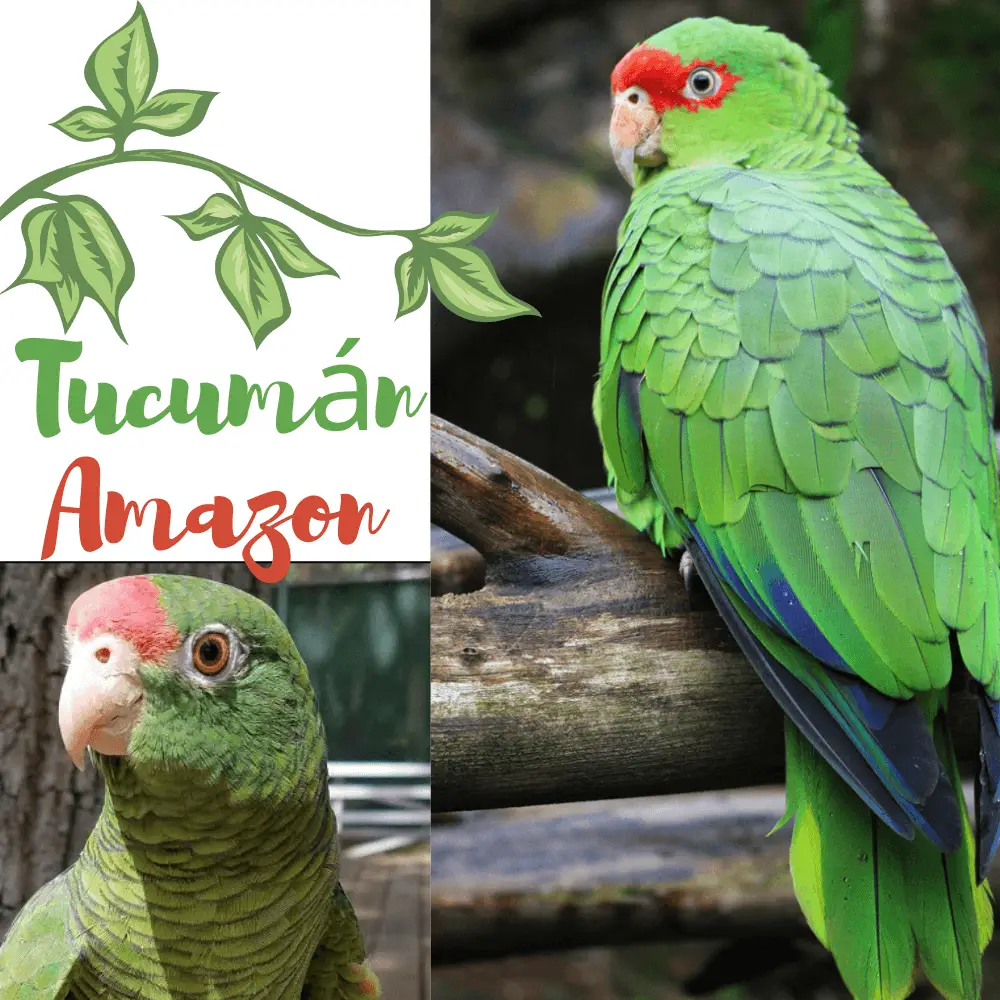
The Tucuman’s Amazon also known as the Tucumán parrot, alder parrot or alder amazon (Amazona tucumana) is a species of bird in the Psittacidae family.
Description
This bird has a predominantly bright green plumage where the feathers are finely bordered with anthracite black. A red triangle marks the forehead (base at the level of the beak and top in the center of the skull). In-flight, the red primary covers form a sharp contrast with the blue coloring the margin of the secondary remiges.
Panties tend towards orange in adults and yellow in young people. The eyes have orange-yellow irises and orbital circles of almost bare fair skin. The fairly powerful beak is horn-gray in color. the nostrils are very open and the yellow wax is visible. Powerful legs are dark gray.
Distribution
The Tucuman Amazon nests in southeastern Bolivia in the provinces of Chuquisaca and Tarija. It has also been observed in parts of northern Argentina, where it does not appear to breed, and on the flanks of the eastern Andes.
Habitat
This Amazon is subservient to primary forests of the Amazonian type with large and medium trees. It can live up to 2,000 m above sea level.
Natural habitat
The Tucuman Amazon nests in southeastern Bolivia in the provinces of Chuquisaca and Tarija but has also been observed in parts of northern Argentina, where it does not appear to breed, and on the flanks of the eastern Andes.
This Amazon lives in amazonian-type primary forests with large and medium trees and can live up to 2,000 m above sea level.
She also loves the hills at the foot of the Andes.
Behavior
The Tucuman Amazon is a rather suspicious Psittacidae. It is therefore very difficult to approach him to study his ethology. Excellent sailboat (an unusual feature within the genus Amazona), this bird emits a very high-pitched contact call when moving.
Feeding
This species feeds mainly on fruits, such as bananas, papayas, guavas, peaches as well as different species of mangoes.
It also consumes different seeds, berries, nuts, flowers, and insects.
Reproduction
This species performs only one annual brood. The breeding season begins in January. The couple arranges their nest in the hollow of a tree where they build a comfortable incubation chamber. The female lays 2 to 4 round eggs that she incubates for 26 days. The young leave the nest around the age of 8 to 10 weeks and become independent 6 to 8 weeks later.
Status in the Natural State
This Amazon parrot Tucumán species is classified as Near Threatened with Extinction on the Red List IUCN.
However, the wild population has suffered heavy losses due to massive exports, and deforestation to create alpine pastures for livestock.
Zoo to You with Tito, Our Tucuman Amazon Parrot
SOURCE:Central Florida Zoo & Botanical Gardens
Related Articles:
- Southern mealy amazon
- Yellow-crowned amazon
- Blue Fronted Amazon
- Double yellow headed amazon
- Yellow-naped amazon parrot
- Red lored amazon
- Red-crowned amazon
- White-crowned parrot
- Orange-winged amazon
- White-fronted amazon




















